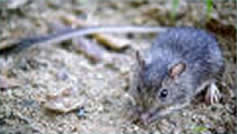 |
Volume 14 - No. 2 - Spring 2004 |
 |
 |
|
Pocket mice find a home in Dana Point
In January 2004, the California Coastal Commission approved a revised development proposal on the scenic and highly contentious Dana Point Headlands. While unfortunately not resolving controversial beach issues, the outcome is excellent for critically endangered Pacific pocket mice, California gnatcatchers, and rare plants. Almost everything possible in land use disputes has transpired on the Headlands, a defining landform along the coast. A ballot measure overturned a disastrous development approval, only to be followed by a lawsuit overturning the City of Dana Point’s subsequent model planning process. A multitude of legal uncertainties stemming from decades of past land use decisions has created fertile ground for protracted litigation. In the wake of a Natural Community Conservation Plan (NCCP) that failed to permanently protect the pocket mice – found only on the Headlands and Camp Pendleton – EHL resolved to do all it could to remedy the situation. At the time of the recent Coastal Commission hearings, interim protections for the Headland’s mice were approaching an end, and failure to reach a solution posed high risks for a population that, according to recent surveys, was plummeting. Working with the City and a new developer, EHL made good progress toward a permanent reserve, with state-of-the-art management and extensive habitat restoration. However, it ultimately took the Coastal Commission’s leverage to expand the reserve to meet scientific objectives. There will be public access, with a scenic perimeter trail and visitor center. The Sierra Club and Surfrider Foundation vigorously opposed the rebuilding of an existing sea wall as inconsistent with the Coastal Act. Nevertheless, in this difficult case, it is our judgment that the Commission seized the best opportunity to save the exceedingly fragile plants and animals of the Headlands. |
Copyright 2004 · Endangered Habitats League
8424-A Santa Monica Blvd #592 · Los Angeles CA 90069-4267

